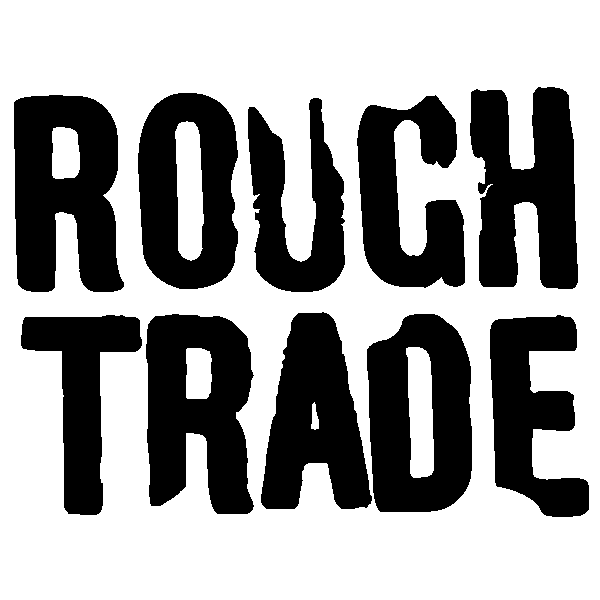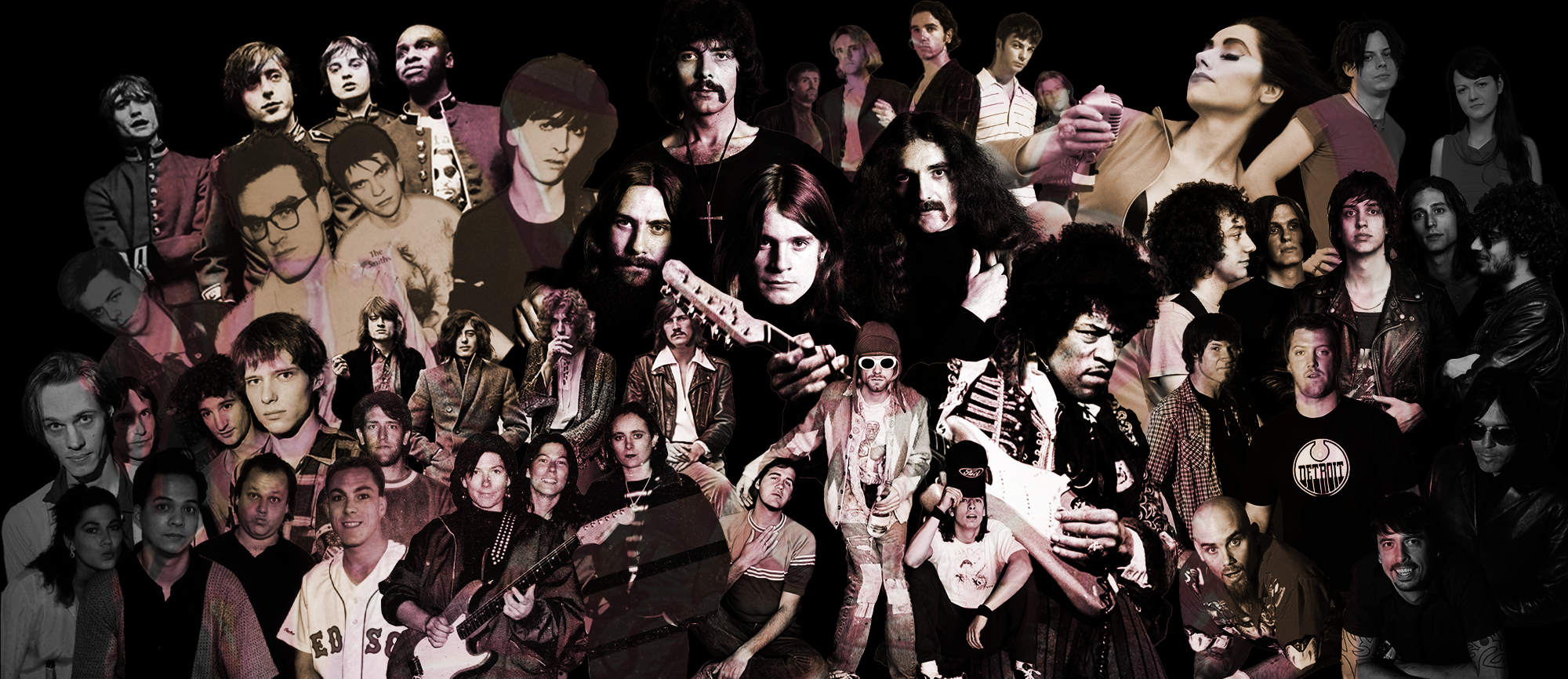"Replace the generic cliches with genuinely raw lyrics, the pristine, over-the-top production, with grit and power, and the trite, self-indulgent guitar solos, with a style of playing that musicians still strive to replicate, and you have the cornerstone of a genre."
Words by Adam McCabe, Rough Trade East
One of the most recognisable and versatile instruments of modern music, the guitar and its many modifications can be found in almost every genre, from classical to pop, hip hop to post-punk, and of course, most commonly the rock music canon.
With 'guitar bands' very much sustaining the British indie rock wave of the 00s in bands like The Libertines, Franz Ferdinand, Bloc Party and Arctic Monkeys this is always a go to era for fans of guitar music. The British indie scene remains dominated by a new brand of British guitar bands, with experimental groups like black midi, Dry Cleaning, Sorry, Black Country, New Road, Squid, bebadoobee and Goat Girl very much evolving the British guitar band sound. It's easy to turn to this saturated area to pull out some of our favourites of all time, not to mention the new guitar sounds ever-evolving further afield with the likes of Sleater Kinney, Altın Gün, The Japanese House, Black Pumas, boygenius, Mdou Moctar, Big Thief, Japanese Breakfast and Courtney Barnett leading the new wave of bands and artists revitalising the scene internationally.
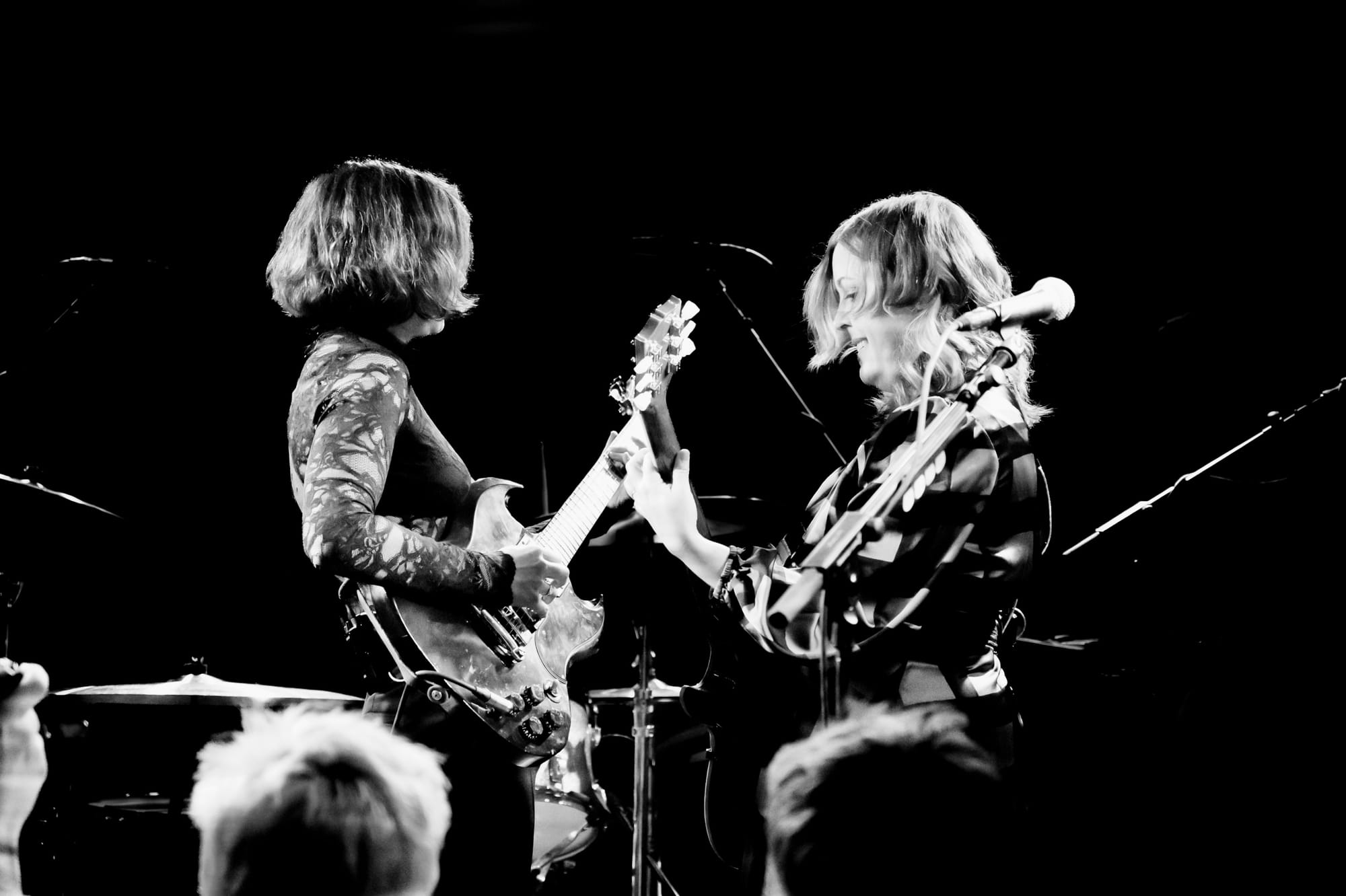
To try put together a fully exhaustive picture of guitar music's evolution is no easy task - but with great pleasure we turn to our Rough Trade Essential range to reflect on some of our favourite guitar albums at Rough Trade. Journeying through several decades of guitar music in the capable hands of producer, singer-songwriter and guitar aficionado Adam McCabe. This considered selection traverses the golden age of classic rock and guitar work which dominated the Britpop and post punk eras, helping us to truly understand the enduring nature of guitar music and its cultural peaks.
Whether Jimi Hendrix's blues odyssey, the master craftsmanship of Johnny Marr, Black Sabbath pioneering the heavy metal genre or the scorching indie anthems of The White Stripes, it is the beautiful and distinctive guitar playing which have earnt many of these artists their stadium-filling rockstar status.
The rudest riffs, the tightest bands and funkiest guitar grooves. Rough Trade East's Adam McCabe explores guitar albums filled to the brim with genre-defining hooks, that have plagued guitar shop workers for the last half century...
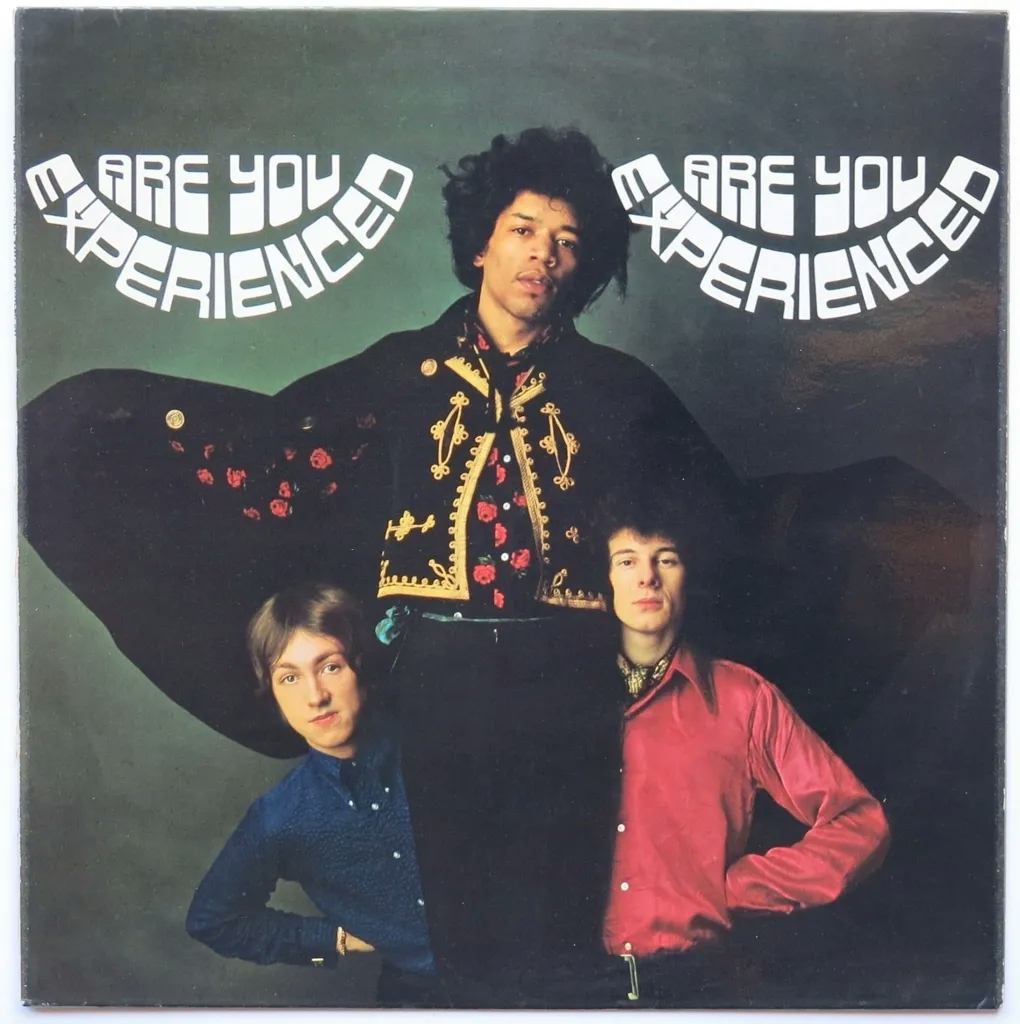
Jimi Hendrix - Are You Experienced? (1967)
I don’t consider this to be the most controversial opinion ever made when I claim Jimi Hendrix to be the greatest guitar player who has ever lived. His technical virtuosity is, of course, well-documented and analysed. I mean, the man has his own chord named after him, the ‘Hendrix Chord’, as any guitar player can teach you about. I could, as many multitudes of people have, wax lyrical on the abilities and techniques of Hendrix, but all would be a mute point, when the only evidence you need can be found in his blistering debut, Are You Experienced?.
A title so appropriate for this psychedelic blues odyssey, that both new and frequent listeners will answer back, ‘No, we are not”. From the first dissonant stabs of Purple Haze, to the final tripped-out blues solo of Red House, Hendrix takes you on a voyage that pushes the limits of what a guitarist can do with their instrument, and with the rhythm section of drummer Mitch Mitchell, and bassist Noel Redding, who were no less as influential in their own field, each expansive track feel kaleidoscopically cohesive. The delicate embellishments on The Wind Cries Mary, the controlled chaos on Manic Depression, and surrealist soundscapes on the title track Are You Experienced?, all combine to completely upend the 60’s blues-rock scene it was released in. When you have legendary musicians looking to Hendrix for inspiration, it’s hard to argue against his worthiness as the greatest to have ever played. From the blues of Eric Claptone and Stevie Ray Vaughan, to the funk of Prince and Eddie Hazel. Even the incomparable Miles Davis is said to have been inspired by Hendrix, which led to the creation of his Opus Bitches Brew.
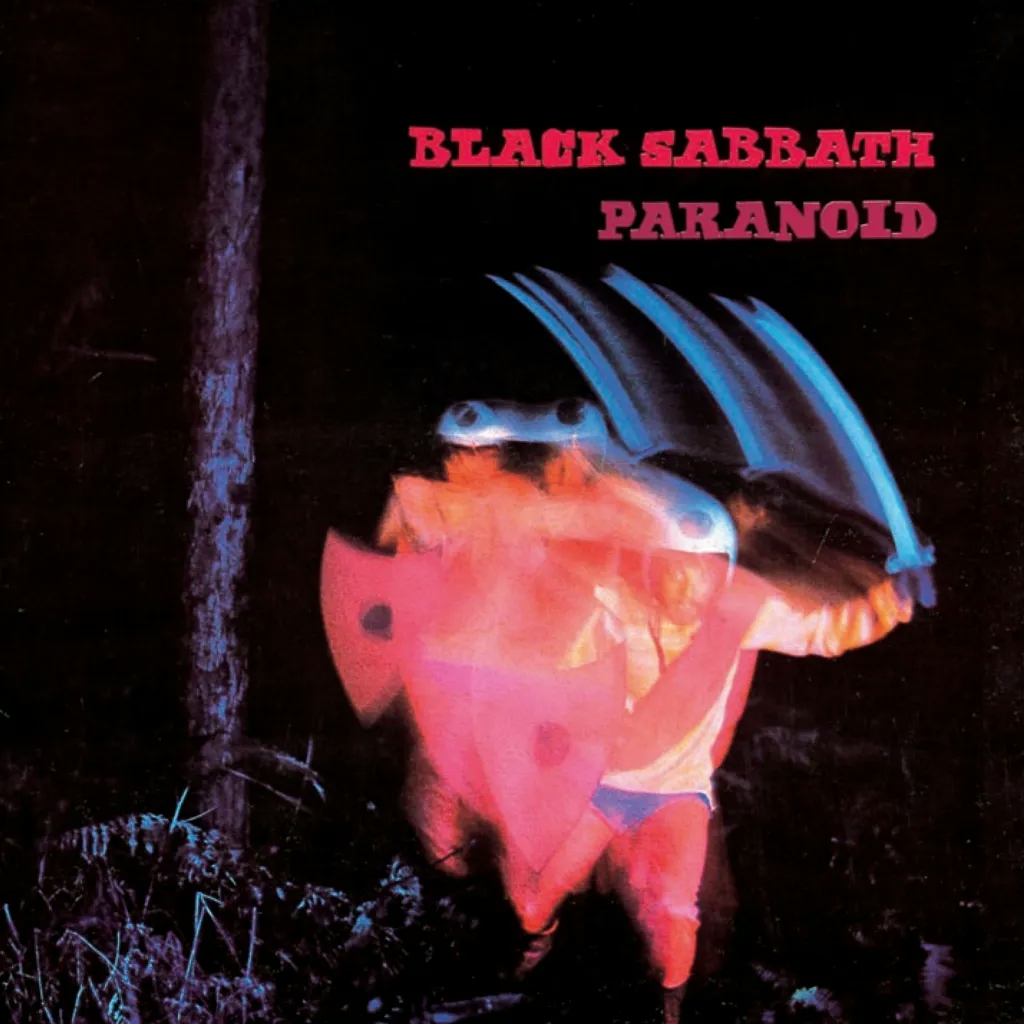
Black Sabbath - Paranoid (1970)
From the very first wailing chords of the album's opener, War Pigs we are drawn into an aura of the heavy, burnt tones that define this 1970’s classic. The opening, near eight-minute behemoth alone would qualify this as one of the great guitar albums. Sabbath’s second full-length LP stands atop the mountain as one of, if not the most, influential metal album of all time, with the entire history of the genre standing in its dark shadow. It’s in the charred playing of Tommy Iommi that create such hypnotically sludgy riffs, the perfect bed for someone as frenetic as Ozzy Osbourne to wail over. Whether the Proto-Doom Electric Funeral, the guttural Iron Man, or the searing title track Paranoid.
"This is an album filled to the brim with genre-defining hooks that have plagued guitar shop workers for the last half-century."
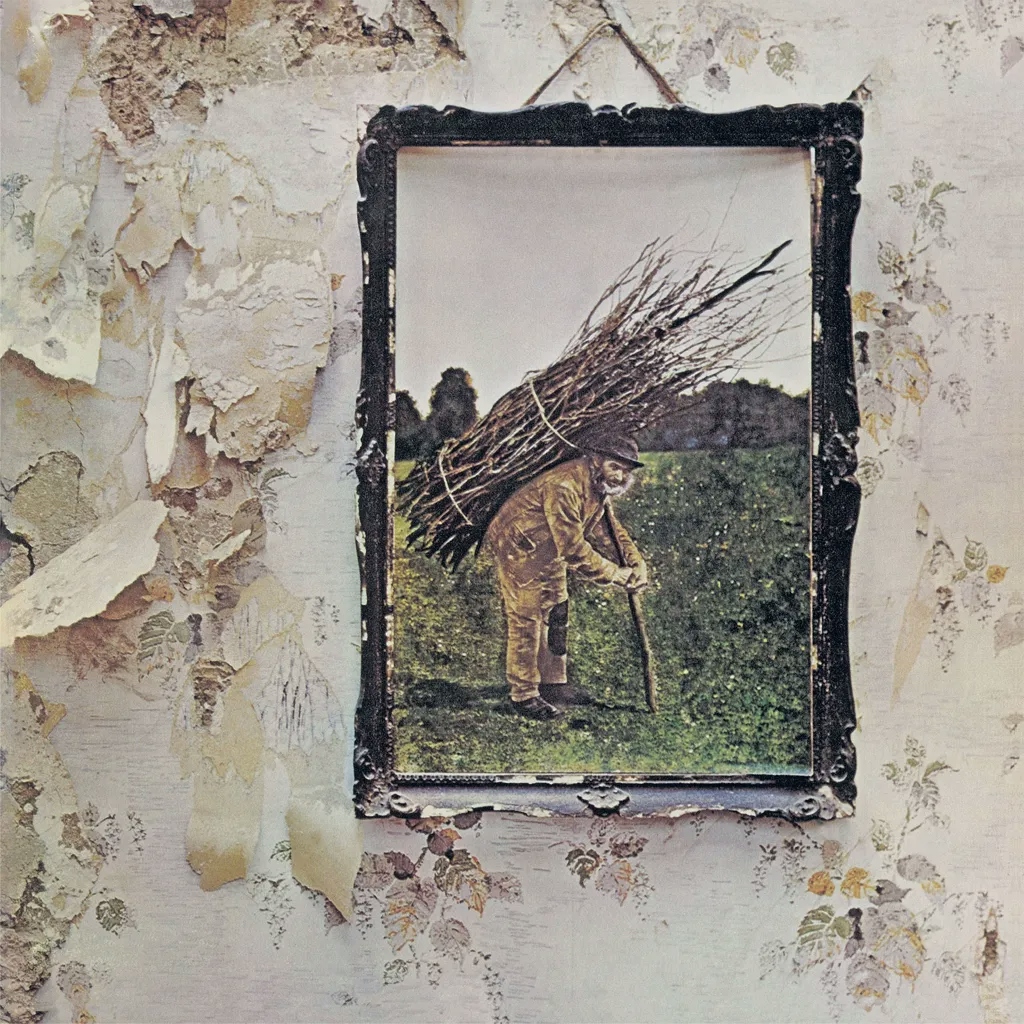
Led Zeppelin - Led Zeppelin IV (1971)
Few groups become so canonised in the realm of popular music that their name alone is one of ubiquity in any conversation that discusses ‘the rock band’. Much akin to The Beatles or The Rolling Stones, damn near everyone has heard of Led Zeppelin. If there are many reasons for that, IV is one of them. In its greatest strength, IV transforms its foundations of blues and folk musical traditions, that the ‘British Invasion’ had based itself on, into something ambitious, ethereal, and ultimately transcendent. With guitarist/ producer Jimmy Page taking the helm, alongside the indomitable John Bonham, Robert Plant, John Paul Jones, we are gifted the dirtiest of blues in When the Levee Breaks, the sweetest of ballads in Going to California, and the rudest riffs in Black Dog. Beyond that, what more needs to be said for an album that features Stairway to Heaven.
Even now as we assess our own terms with the enduring legacy and mythos of Led Zeppelin, IV still stands as the true pinnacle of the golden age of classic rock, when the guitar ruled above all else, before its slow, steady decline to self-indulgence. An indulgence that itself would go on to breed its own form of defiant expression.

Television - Marquee Moon (1977)
Throughout the course of the 70’s, guitar rock arguably hit its cultural peak. A peak that invariably saturated the market with a kind of conventional wisdom to make a classic rock number. conventional song structures, straight rhythms, big production, and, of course, your climactic guitar solo. Though, as any music historian can note, the end of the 70s saw the explosion of punk, bent on upending damn near every form of convention. But where acts like The Ramones, The Sex Pistols, and The Clash stripped away the glossy lacquer of conventional rock radio, in exchange for direct, raw, and affronting statements, New York's Television endeavoured to subvert what guitar music can fundamentally be.
The guitar duo of Tom Verlaine and Richard Lloyd remove the conservatively rigid forms of punk and rock, in exchange for more fluid, dynamic, and at times, off-kilter rhythmic melodies and countermelodies.
"Their interplay in tracks like Venus and the 10-minute spectacle of Marquee Moon, demonstrate such a unique take against the guitar work of the time, that the entire genre of post-punk radiates from its glow."
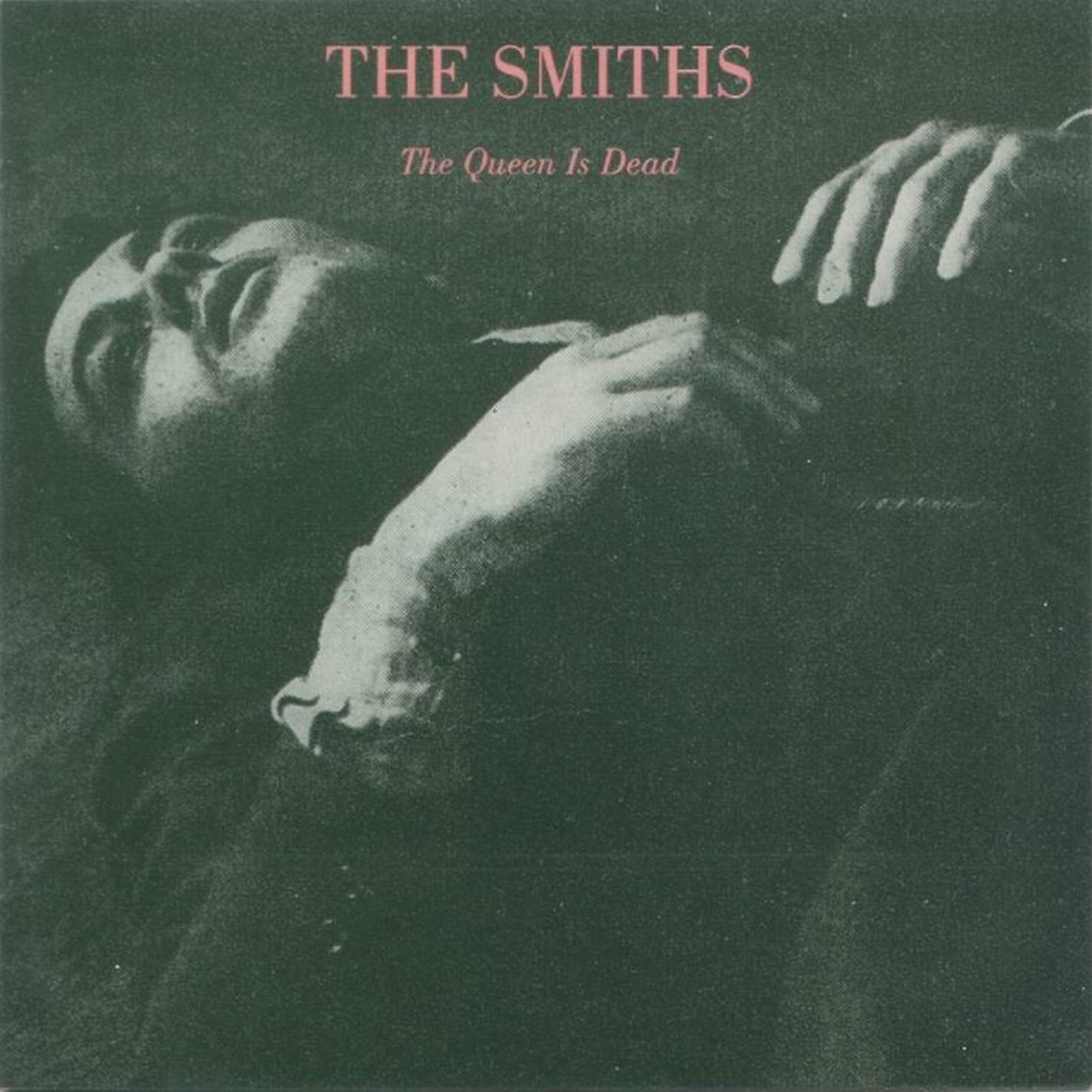
The Smiths - The Queen is Dead (1986)
Like it or not, modern popular music, and the wonders it's brought us, would not have been the same without The Smiths. The partnership of Morrissey and Marr, for as brief and contentious as it was, created a framework and a gold standard for the waves of Indie Rock that followed, that to this day, their body of work can only be attempted to be replicated. At the top of it, The Queen is Dead. What their 1986 album does so expertly, and what it teaches its school of disciples, is that to be a master craftsman, does not require yourself to be showy and indulgent. The masterful guitar work of Johnny Marr is one that devotes service to the song, and to the atmosphere and aesthetic it is trying to create. From start to finish, the album is richly layered with incisive and supple guitar parts, whether the chiming acoustic of Cemetery Gates or the frantic dance between electric and slide guitar in Bigmouth Strikes Again, that go to encompass the romantic and near-theatrical delivery of Morrissey’s vocals.
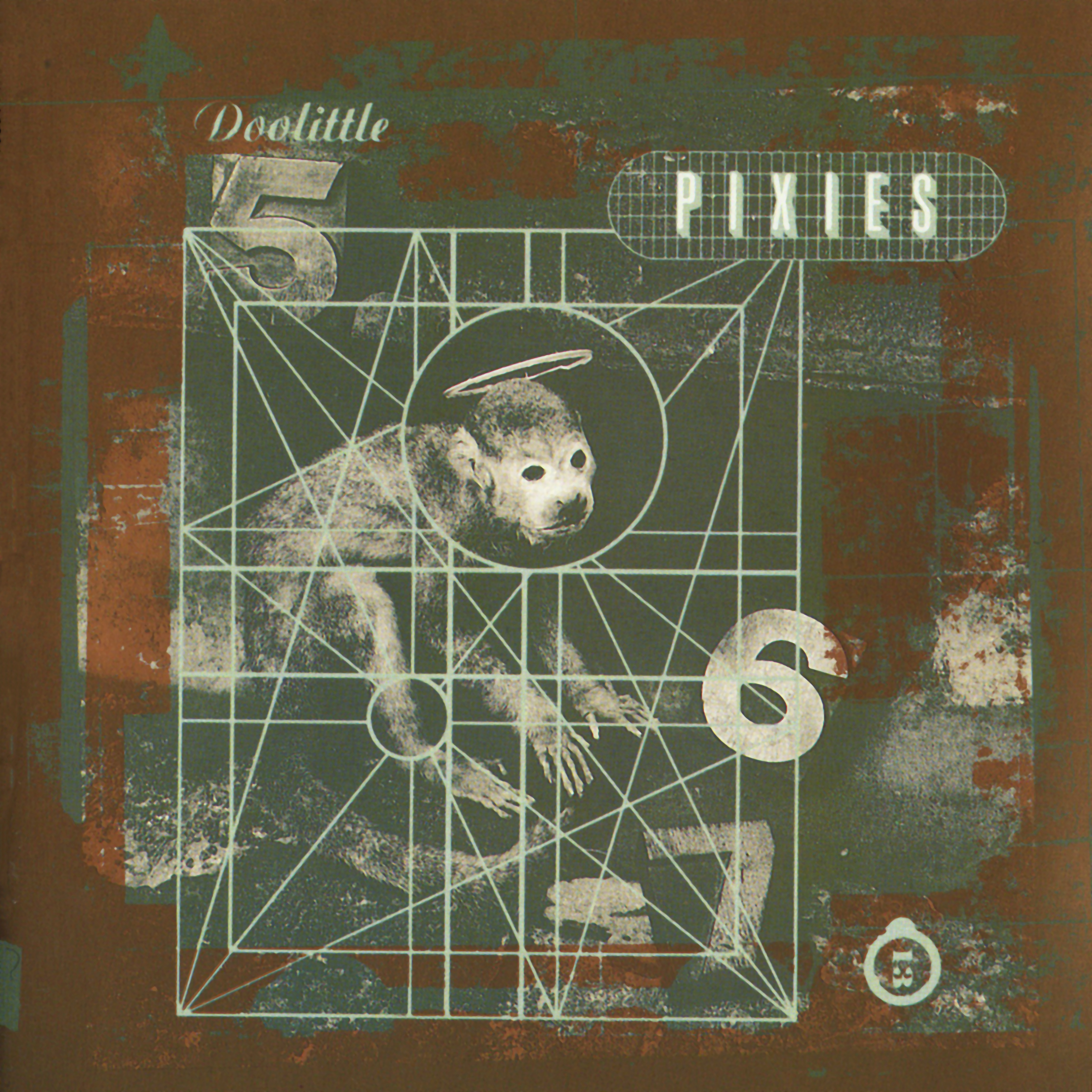
Pixies - Doolittle (1989)
In songwriting, certain ways in which a song is structured can become so utilised over time that they become commonplace, to the point that it’s hard to imagine there was a time when someone was to pioneer that particular feature. To hear a typical alt-rock rupture from its soft moody verse to its raucous chorus, Pixies were those pioneers. Doolittle gifted the likes of Nirvana, PJ Harvey, Radiohead, The Strokes and Interpol with the assurance to express and nurture tender, emotional melodicism and orchestration with the angst and aggression that punk music provided us, and that both together can compound the either’s effect. We are hosted by some of the catchiest and cleanest melodies and guitar licks of the late 80’s with Wave of Mutilation and Here Comes Your Man, and the gnarliest of hooks in alternative rock with Debaser, Tame, and Crackity Jones. This clean/dirty dichotomy becomes most apparent between the interplay of lead and rhythm guitar by Joey Santiago and Black Francis in the song Hey, with Francis’ crisp chords underpinning Santiago’s distinctly sharp lead.
"It’s in Doolittle that Pixies become the common ancestor to what modern alternative rock is today."
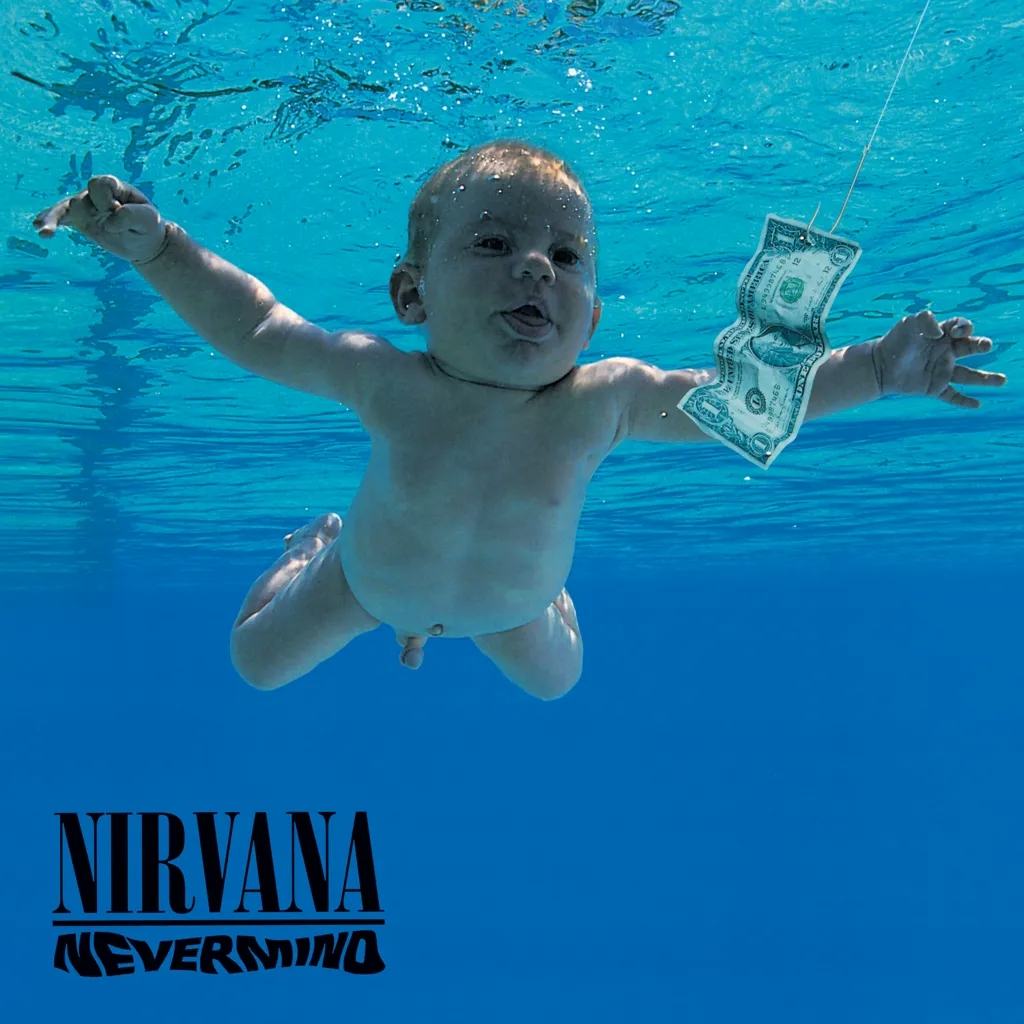
Nirvana - Nevermind (1991)
Nirvana is a testament to the idea that if you want to advance forward, you must let the old Gods die. By the start of the 90’s, we had witnessed the slow, bloated demise of the behemoth that is now classic rock. From its transcendent highs to its debaucherous lows, what was rebellious, outsider rock n’ roll, was now abundant, extravagant and corporatized. Nirvana was born out of the same lifecycle that spawns every generation's urge to rebel against the absurdity of its forefathers, with Nevermind being a pillar of this movement. Replace the generic cliches with genuinely raw lyrics, the pristine, over-the-top production, with grit and power, and the trite, self-indulgent guitar solos, with a style of playing that musicians still strive to replicate, and you have the cornerstone of a genre. Building off what Pixies had inspired, Nirvana ramped it up to its brink. Sections explode to shear walls of sound, fit to nearly crumble under their own weight, with tracks like Lithium, and Drain You delivering us a chorus like a swift kick to the gut.
Cobain’s approach to his instrument spits in the face of the past masters’ reverence for the role the guitar played traditionally. You simply have to listen to the solo of In Bloom, with its janky, unpolished demeanour, to get a sense of this irreverence. While we have the high octane, cacophonous Territorial Pissings, Breed and Stay Away, that ground us to the punk lineage of grunge, what truly defines this as a staple is its want for dynamics. It is as much in the sombre, restraint moments of the album, be it Come As You Are, Polly, or the haunting Something In The Way, what fundamentally solidified Kurt Cobain as both a tragic artist, and a once in a generation musician.

Breeders - Last Splash (1993)
Wherein you have Pixies and Nirvana opening the 1990’s up to a new, discordant, and moodier sound of alternative rock, you would be remiss to overlook the eccentric pop rock stylings of The Breeders 1993 release, Last Splash. By no means an antithesis of either acts, Kim Deal, of course, being of previous Pixies fame, and The Breeders themselves opening for Nirvana on a string of international tours, their quirkier, more diversified approach rounds out what would be a defining facet of 90’s alternative music. While finding ease in navigating a catchy melody, the infectious bops like Cannonball, No Aloha, and I Just Want To Get Along, are still infused with a wild and exuberant style of noisy experimentation. Roi and S.O.S showcases Breeders caution to the wind approach to guitar music, that bids to invigorate a conscious excitement in the music.
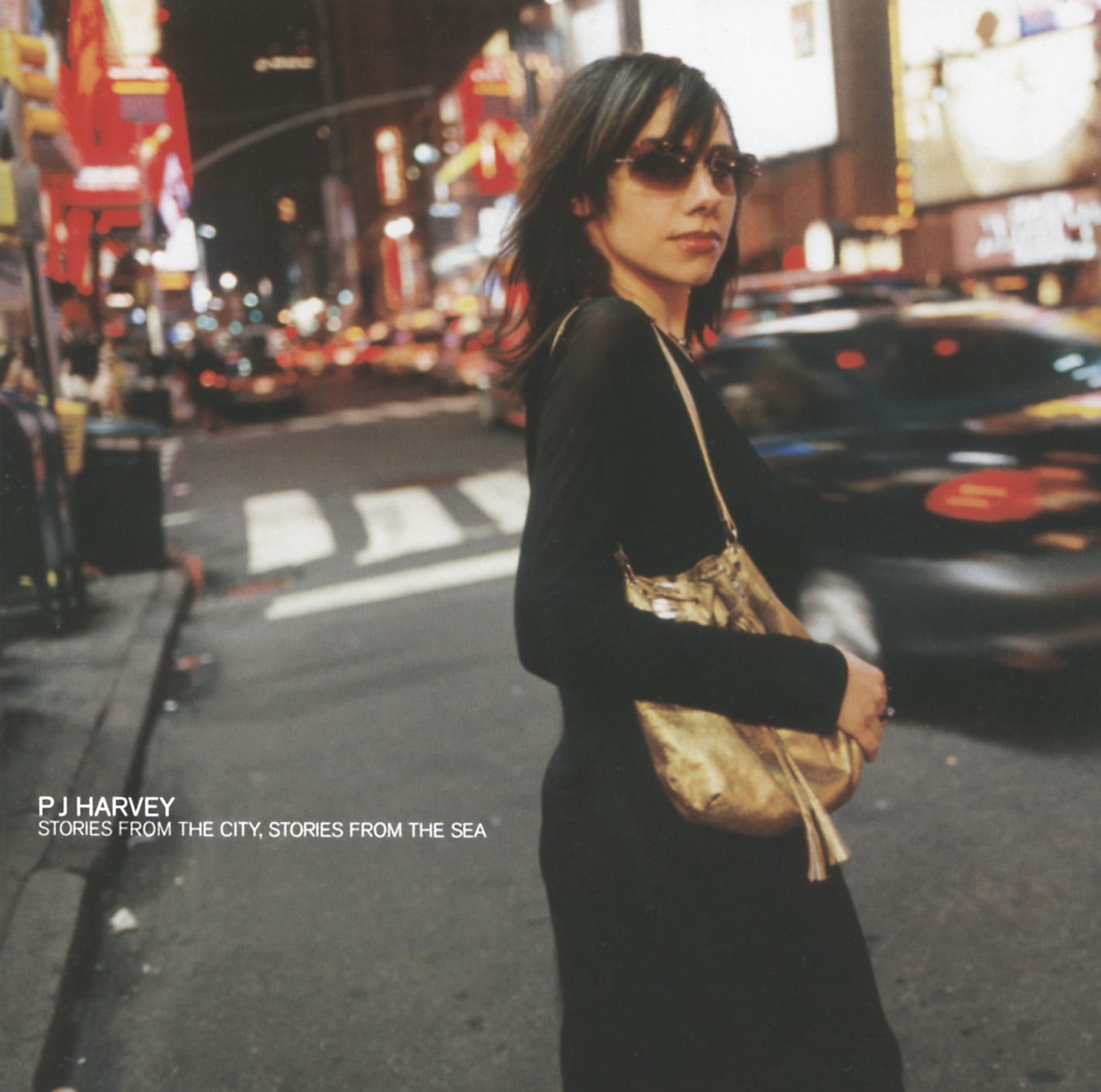
PJ Harvey - Stories From The City, Stories From The Sea (2000)
PJ Harvey’s ground swell through the 1990s that established her as the tour-de-force of alternative music she became was no small feat. The beautiful, yet jagged duality of tenderness and aggression was a staple throughout her 90’s output, and in fact, any one of those bodies of work up to the turn of the century would find a home on this list. Yet, in her 2000 release Stories from The City, Stories From The Sea, the scope of her musical palette delivers a more diverse and matured approach, supplementing the more caustic grunge elements with greater detail on mood. The snarl still lingers however among tracks like Big Exit, The Whores Hustle and the Hustlers Whore, and This is Love, but through songs like the hypnotic A Place Called Home and the disparate Beautiful Feeling, you get a greater sense of the finesse and attention to detail Harvey has with her instrument. Her unflinching approach to her craft plants her firmly as a near-ubiquitous influence on female guitarists and singer-songwriters in the modern age. An influence that would allow such modern powerhouses like St. Vincent and Courtney Barnett to flourish.
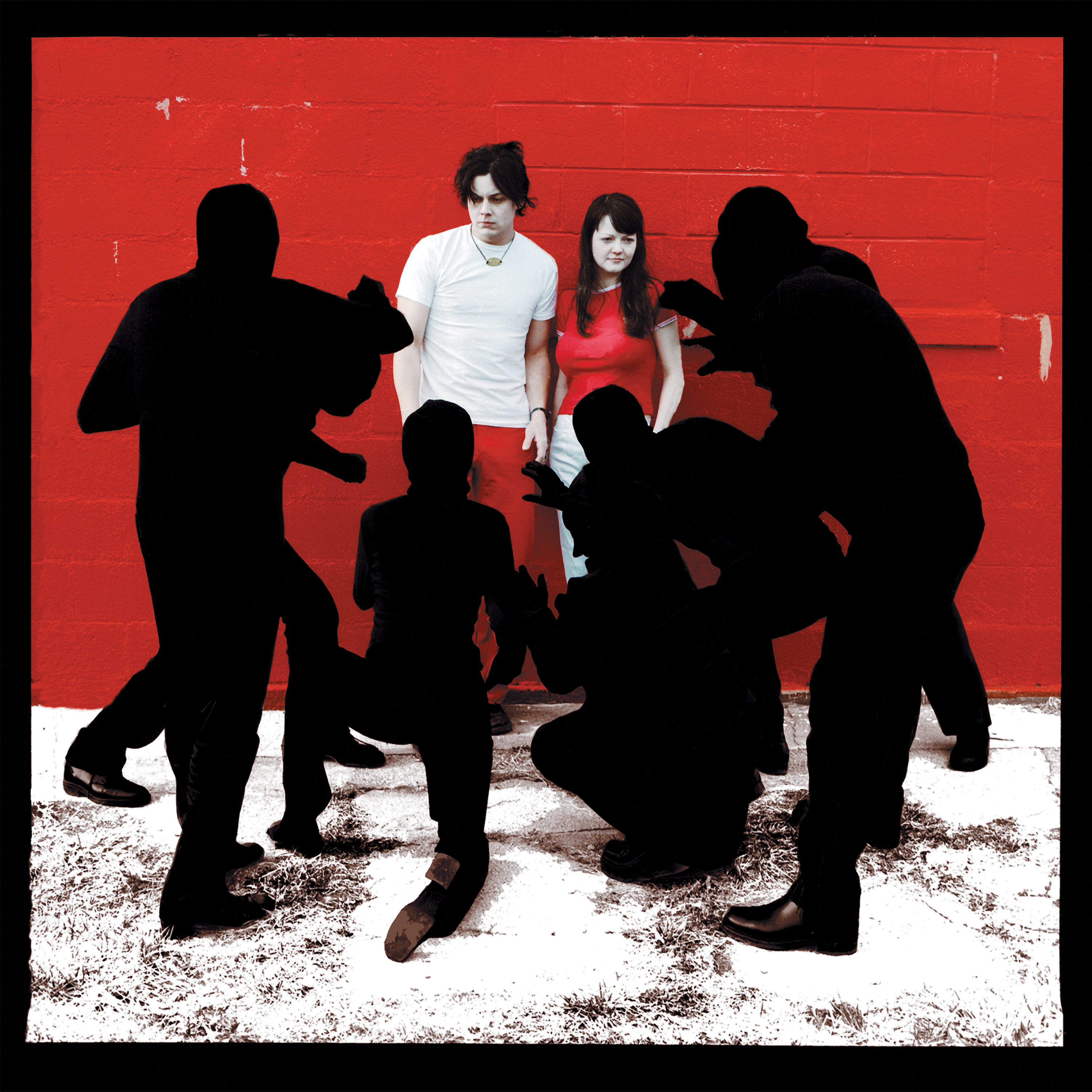
The White Stripes - White Blood Cells (2001)
In the pantheon of guitar heros, Jack White stands as one of the last true icons. In both style and technique, he is a textbook case study of constraint and limitation breeding true creativity and innovation. It’s in White Blood Cells where the two points of White’s artistic intent find their converging root point. A blossoming songwriting ability, and a pursuit of tonal and sonic exploration are intertwined on the Detroit duo’s third release, and from it sprouted the career of one of the 21st century’s most singular musicians. A distinct jump in production value from the groups last two releases allowed for a greater demonstration of dynamics between tracks, without sacrificing the immediacy of their garage rock core. The albums strength is its ability to hold our attention, from the first piercing seconds of feedback in Dead Leaves and The Dirty Ground to the delicate acoustic lullaby of We’re Going to Be Friends, from the scorching indie anthem Fell In Love With A Girl, to the fuzzed out, near avant-garde Aluminium.
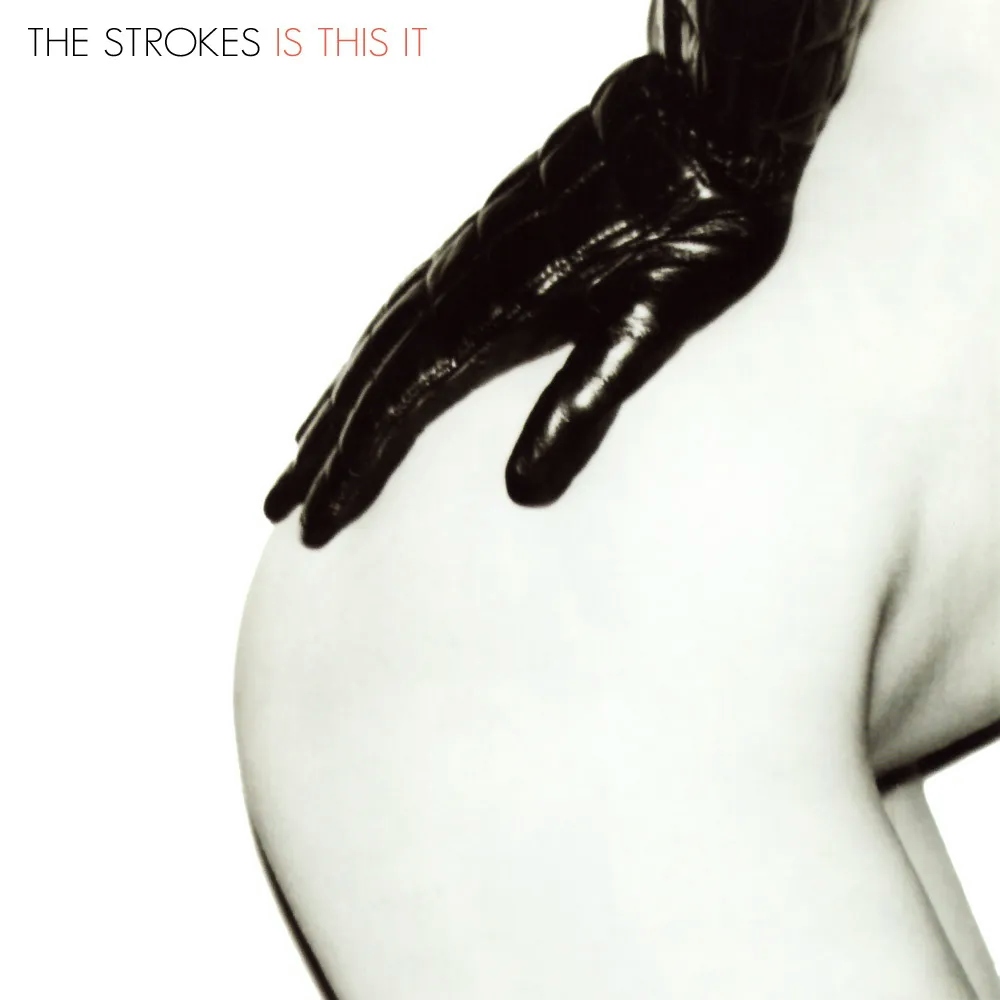
The Strokes - Is This It? (2001)
Everything is cyclical, if given enough time, and music is no exception. In the storied history of guitar music, we’ve seen the instrument be a sceptre of transcendent virtuosity, an instrument of pain, and, at times, a parody of itself. Through all of this however, it is easy to overlook the humble beginnings of the music that had created some many diverging paths. In its essence, early rock n’ roll was simply, to have a good time. What The Strokes were able to incite on their debut release was a revolution of carefree cool and indie sleaze, with direct and potent tracks from start to finish. Much like the pairing of Television’s Verlaine and Llyod, the bands guitar duo of Nick Valensi and Albert Hammond Jr weave such precise and tight interplay that many of the album's most iconic guitar moments can’t be separated out into an individual player. Their playing on tracks like Soma, Alone, Together, and Hard to Explain are instead holistic statements. Coupled with early rock n roll infused heavyweights like Someday and Last Night, you have a powerful jolt that fuelled a myriad of copycats.
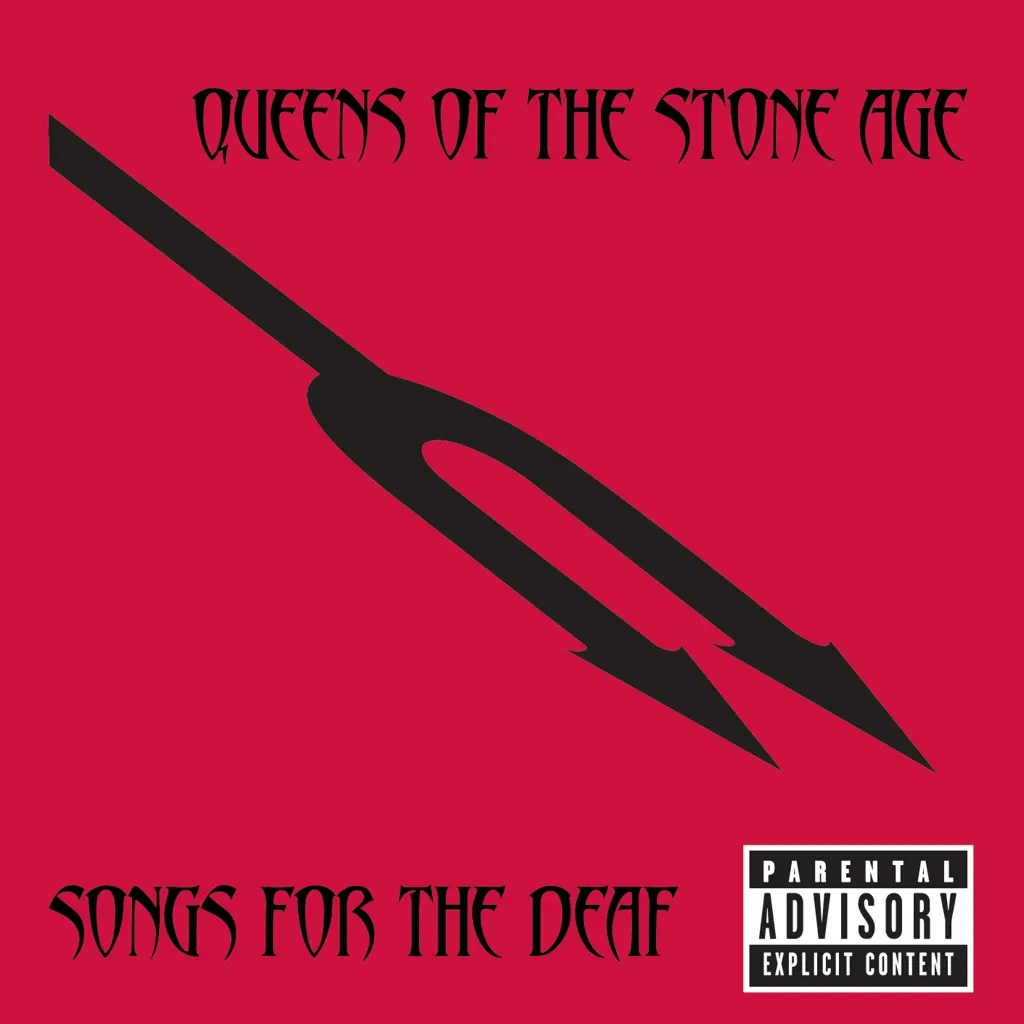
Queens Of The Stone Age - Songs for The Deaf (2002)
Amongst the scenes of emerging new indie rock, saccharine pop and the early emerging dominance of hip hop, Josh Homme and company had been (not-so) quietly flying the flag of a type of rock that would invariably shape the sound of anyone who dared to use a distortion pedal there after.
Songs For The Deaf is a feat of pure strength. As the post-grunge era mellows, the metal scenes fractured, and rock fans embracing the more jubilant garage revival, Queens of the Stone Age were able to combine many elements of each, and then some, into a juggernaut of modern rock music. Homme’s distinct angular yet suave style of playing mixed with impressively beefy guitar tones is showcased song after song. No One Knows jilted riffs, Go With The Flow’s forceful drive and A Song For The Dead’s relentless demonstrations of ability are moments on a journey you don’t want to get off.
"Ultimately, when you cut right down to it, the reasons and metrics for why an album has a spot on a list like this mean nothing, when put simple, that album fucking rips from start to finish."
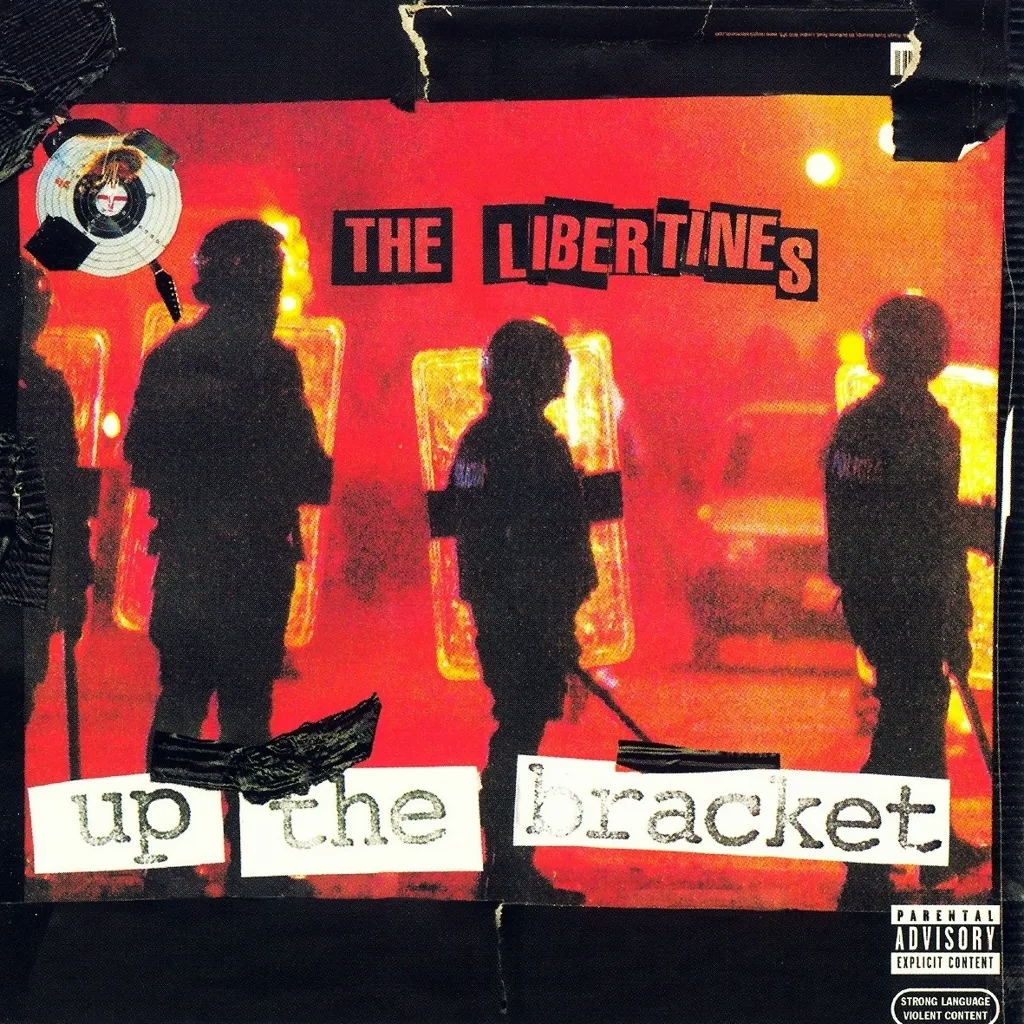
The Libertines - Up The Bracket (2002)
The British music landscape by the mid-90’s was wholly captivated by the grandiose and larger than life phenomenon of Britpop, where figureheads like Oasis, Blur, and Pulp cemented themselves in the British consciousness. However, much like all once great empires, the Britpop wave faced its staggered decline by the turn of the new millennium. Those who hadn’t already jumped ship to explore new territories, and that endeavoured carry on the traditions ‘Cool Britannia’, where met with middling critical reception and a public perception of being sterile and bland in their quest to appeal to a more global audience.
Across the pond, as acts like The Strokes were reinvigorating the US indie rock scene, so too did the UK need its own form of revitalisation. It was in the chaotic partnership of Pete Doherty and Carl Barat’s Libertines, with their blistering debut album Up the Bracket, that British music got the splash of cold water in the face it needed.
Brash and raucous with a poetic heart of gold, the urgency of this album is something to behold. Jumping from rock n roll swagger in Vertigo and Boys In the Band to punkish rascals on Horrorshow and The Boy Looked At Johnny, Its sense of energy is so undiluted that you risk getting caught in the crossfire if you’re not careful.
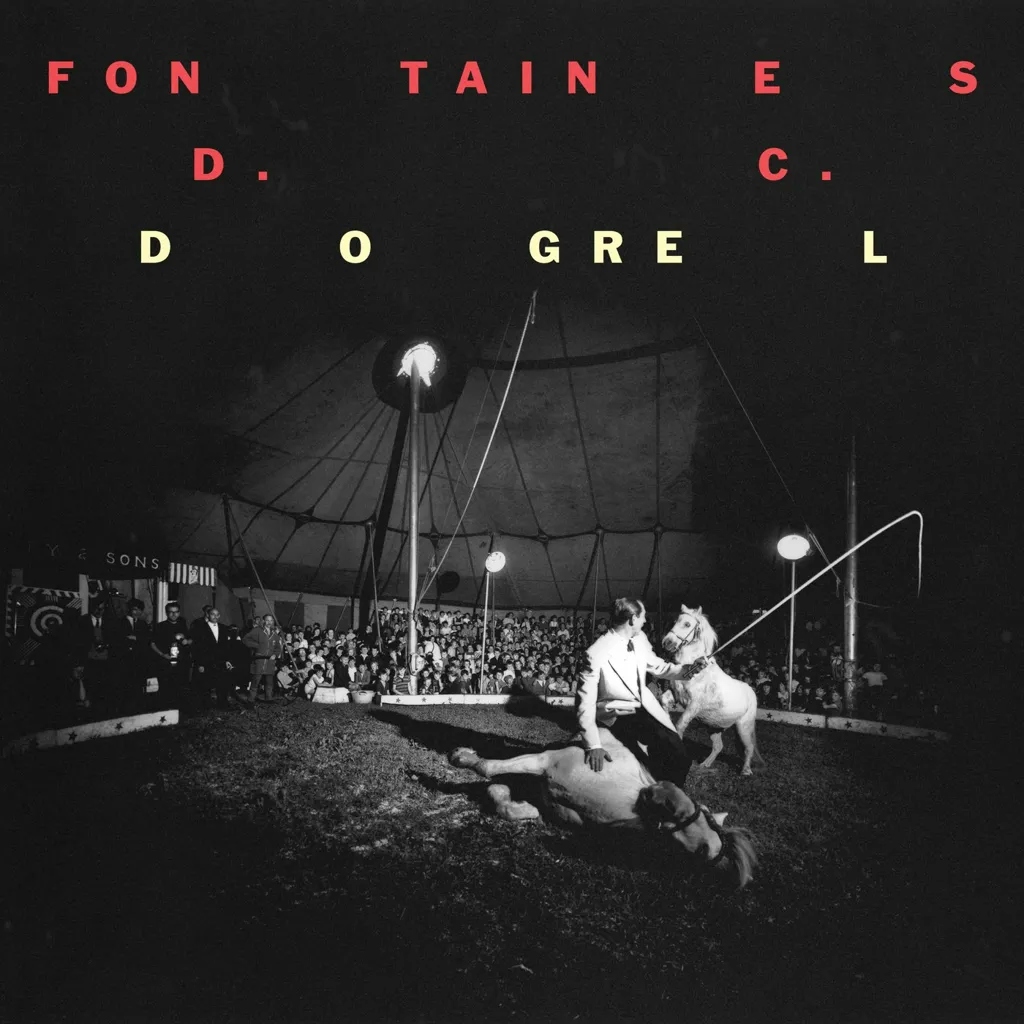
Fontaines D.C. - Dogrel (2019)
In the Internet age, it takes only mere clicks to see all manner of technical might and proficiency. Through technological advancements, the democratisation of music creation and release allowed us to witness all kinds of everything. With such a deep array of material, there are countless bodies of work to herald for their impact and ingenuity.
"To include Fontaines D.C’s debut release, Dogrel, is to point to a space amidst a sea of abundance and oversaturation. A breath of fresh Éire, as it were."
Dogrel is stark in its directness. The robust and self-assured positions of each player's role is no more or no less than what is required. Bolstered by Connor Curley and Carlos O’Connell's dual guitar work, we careen from the crisp jangle of Sha Sha Sha to the furious grit of Hurricane Laughter, to the raucous new garage staple of Boys In The Better Land. Through this concise debut, Fontaines D.C. embodies both the jubilant energy of early rock n roll, with the biting angst of the later post-punk and alternative rock scenes.
Honourable mentions...
Feminsit punk riot grrrl duo Sleater-Kinney, talented guitar wunderkid turned indie rock darling Snail Mail, haunting and soulful rocker Cat Power, the timeless guitar picking of Fleetwood Mac, the electric guitars of synth-pop pioneers Depeche Mode, the unique guitar tones of the Beatles' Revolver, the raw rock ramblings and skillful guitar of Courtney Barnett, the motoring riffs of indie icons Arctic Monkeys, the dark, pulsing basslines of Interpol'sTurn Up The Bright Lights the freewheeling garage rock of White Denim, and ofcourse the genre-defining gritty hard rock of The Rolling Stones.

